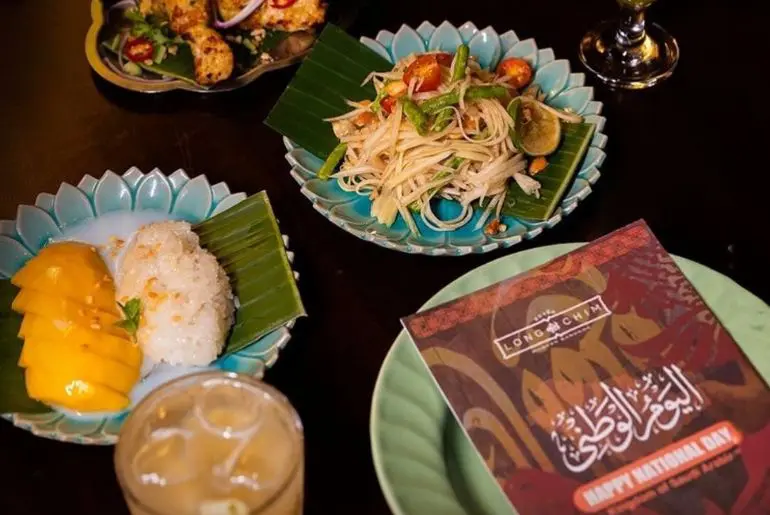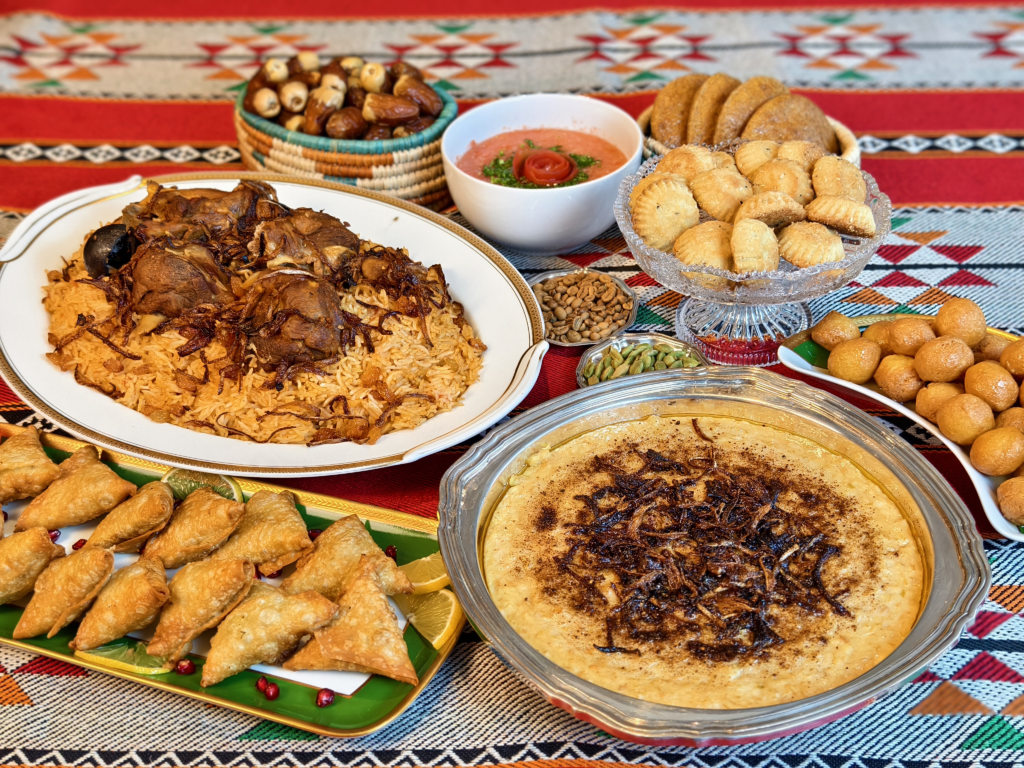In recent years, fusion food in Saudi Arabia’s urban cafes has become more than just a trend. It represents a cultural shift, blending tradition with innovation. From the bustling streets of Riyadh to the vibrant neighborhoods of Jeddah and Dammam, cafes are embracing international flavors and creating unique dishes that appeal to both locals and tourists.
The rise of fusion food in Saudi Arabia is a reflection of its evolving culinary landscape. As young entrepreneurs enter the food business and social media continues to influence taste, urban cafes are becoming creative hubs for food experimentation.
A New Culinary Wave Across Cities

Fusion food in Saudi Arabia’s urban cafes often mixes Middle Eastern flavors with Asian, Western, or Latin cuisines. Popular items include matcha-flavored kunafa, shakshuka tacos, or kabsa sushi rolls. These creations not only surprise the taste buds but also highlight the country’s growing openness to global culinary influences.
In cities like Riyadh, fusion menus are now common. Restaurants are reimagining traditional Saudi dishes by incorporating spices, cooking techniques, or presentations from other parts of the world. Chefs are no longer bound by rigid recipes — they are exploring what happens when cultures collide on a plate.
Why Fusion Food is Gaining Popularity
There are several reasons behind the rapid growth of fusion food in Saudi Arabia’s urban cafes:
- Cultural Curiosity: Younger Saudis are more exposed to global travel and digital media, encouraging a desire to try new and exciting flavors.
- Social Media Influence: Platforms like Instagram and TikTok have turned food into a visual experience. Colorful, unconventional fusion dishes attract attention and drive footfall to cafes.
- Business Innovation: New café owners see fusion cuisine as a way to differentiate their brand in a highly competitive market.
- Tourism and Expat Communities: With the increase in international visitors and expat populations, offering diverse food options helps cater to a wider customer base.
Fusion food in Saudi Arabia’s urban cafes reflects a younger generation eager to express themselves through culinary creativity while still honoring cultural roots.
Top Fusion Dishes Taking Over Saudi Cafes
Here are some standout examples of fusion food trending in Saudi Arabia’s cities:
- Sushi Kabsa Rolls: A unique twist on Japan’s sushi and Saudi Arabia’s kabsa rice, combining saffron rice, chicken, and spices inside nori rolls.
- Za’atar Croissants: French pastries filled with traditional za’atar mix, providing a delicious East-meets-West breakfast option.
- Matcha Basbousa: A creative spin on the classic Middle Eastern dessert, infused with Japanese matcha for a vibrant green color and earthy flavor.
- Shawarma Tacos: Mexican-style tacos filled with shawarma meats, garlic sauce, and pickles — a perfect mix of both cuisines.
- Lotus Boba Tea: Milk tea blended with crushed Lotus biscuits, combining the Taiwanese drink trend with a Saudi sweet tooth.
These items not only taste great but also serve as Instagrammable moments that promote both the café and the country’s evolving food identity.
Urban Cafes Leading the Fusion Movement
Several urban cafes in major cities are becoming trendsetters in fusion food:
- The Fork Lab (Riyadh): Known for its ever-changing experimental menu, this café introduces new fusion concepts each month.
- Blend & Bites (Jeddah): Offers a wide variety of hybrid dishes like falafel burgers and tahini smoothies.
- East Meets West Café (Khobar): A popular spot that fuses Korean, Italian, and Saudi flavors with great balance and taste.
These businesses are not just selling food. They are shaping Saudi Arabia’s modern dining experience through their commitment to innovation and customer engagement.
Challenges in Creating Fusion Food
Although fusion food in Saudi Arabia’s urban cafes is booming, it comes with certain challenges:
- Maintaining Authenticity: Overdoing fusion can sometimes confuse diners or dilute cultural identity.
- Balancing Flavors: Mixing cuisines requires skill to ensure ingredients complement each other instead of clashing.
- Supply Chain Issues: Some fusion recipes require imported ingredients that may not always be available or affordable.
Still, most café owners see these as opportunities rather than obstacles. Many choose to use local ingredients creatively to achieve international flavors.
Consumer Response and Market Potential

The response to fusion food in Saudi Arabia’s urban cafes has been overwhelmingly positive. Diners, especially those aged between 18 and 35, actively seek novelty in their meals. Online reviews and word-of-mouth recommendations further push the demand for inventive dishes.
Food delivery apps have also played a role in spreading fusion trends, making it easier for people to try new offerings from different parts of the city.
Experts predict that the market for fusion food in Saudi Arabia will continue to grow, especially with the government’s support for entertainment, culture, and hospitality under Vision 2030.
Conclusion: A Flavorful Future
Fusion food in Saudi Arabia’s urban cafes is not just a passing trend; it’s a symbol of a society in transformation. Through food, people are finding new ways to connect, express, and innovate. Whether it’s a sushi roll filled with kabsa rice or a croissant stuffed with dates and cheese, fusion cuisine is bridging gaps between generations, cultures, and tastes.
As more cafés open and experiment, Saudi Arabia is likely to become a regional leader in creative, culturally inclusive dining. And for food lovers, this is just the beginning of a delicious journey.
Also Read – 7 Powerful Ways Bedouin Heritage Shaped Saudi Food Culture



